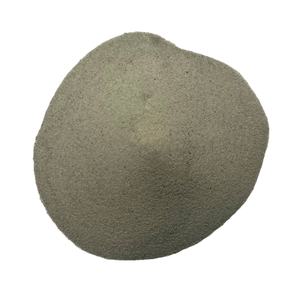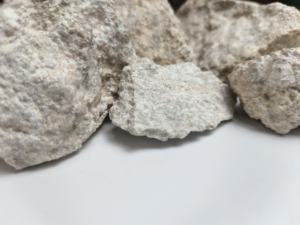Discover Premium Ceramic Products | Durability & Elegance United | Advanced Ceramics
1. Introduction
When it comes to handling extreme heat and corrosive environments, few materials match the performance of a silicon carbide crucible. Known for exceptional thermal conductivity, mechanical strength, and resistance to thermal shock, silicon carbide (SiC) has become a go-to material in both heavy industry and niche artisan markets. Whether you’re melting metals in a foundry or baking a casserole in a silicon carbide ceramic dish, this versatile compound delivers reliability and durability.

2. What Is a Silicon Carbide Crucible?
A silicon carbide crucible is a container made primarily from silicon carbide—a synthetic ceramic compound formed by combining silicon and carbon at high temperatures. These crucibles are engineered to withstand temperatures exceeding 1600°C (2912°F), making them ideal for melting non-ferrous metals like aluminum, copper, and zinc. Their high thermal conductivity ensures even heating, while their chemical inertness prevents contamination of molten materials.
3. Key Properties and Advantages
Silicon carbide crucibles stand out due to several critical properties:
- Exceptional thermal shock resistance
- High hardness and wear resistance
- Excellent thermal conductivity
- Low thermal expansion
- Chemical stability in acidic and basic environments

These traits make silicon carbide crucibles far more durable than traditional clay-graphite or alumina-based alternatives, especially in repeated high-temperature cycles.
4. Industrial and Commercial Applications
Beyond metal casting, silicon carbide finds use in a surprising range of products. In industrial settings, you’ll find silicon carbide ceramic tiles lining furnaces, silicon carbide burner nozzles in combustion systems, and silicon carbide bricks in kiln construction. High-precision components like silicon carbide rings and silicon carbide ceramic columns are used in semiconductor and aerospace applications.
In plumbing, silicon carbide ceramic pipes and silicon carbide tube insulators offer corrosion resistance and longevity. For temperature measurement, silicon carbide thermocouple protection tubes shield sensors in aggressive environments. Even grinding and cutting tools benefit—silicon carbide grinding discs and silicon carbide sanding discs are common in metalworking and pottery finishing.
5. Silicon Carbide vs. Other Advanced Ceramics

When comparing materials, boron carbide vs silicon carbide often comes up. While boron carbide is harder and used in armor applications, silicon carbide offers better thermal conductivity and is more cost-effective for high-temperature industrial use. Another competitor is silicon nitride—a material prized for its fracture toughness. Silicon nitride ceramic components, such as silicon nitride crucibles, silicon nitride rings, and custom silicon nitride heat shields, excel in dynamic load environments but are typically more expensive.
The high purity silicon nitride powder market continues to grow, driven by demand in automotive and energy sectors, but silicon carbide remains dominant in static, high-heat applications like crucibles and furnace linings.
6. From Crucibles to Kitchenware: The Consumer Side of Silicon Carbide
Surprisingly, silicon carbide has made its way into home kitchens. Brands now offer silicon carbide ceramic dinnerware, including silicon carbide ceramic dinner plates, silicon carbide ceramic serving bowls, and even silicon carbide ceramic baking dishes. These items—like the silicon carbide ceramic casserole dish with lid or silicon carbide pie dish—are prized for even heat distribution and oven-to-table aesthetics.
You’ll also find specialized items such as silicon carbide ceramic butter dishes with lids, silicon carbide ramekins, and holiday-themed silicon carbide Christmas ceramic platters. Whether in black, white, or handcrafted designs like silicon carbide blue white porcelain plates, these pieces combine function with modern ceramic artistry.
7. Specialty Forms and Custom Solutions
Beyond standard shapes, manufacturers produce a variety of custom silicon carbide components. RBSiC (reaction-bonded silicon carbide) silicon carbide tile blocks are used in wear-resistant linings. Silicon carbide discs serve roles from tap valves (silicon carbide ceramic disc taps) to piezoelectric sensors (silicon carbide piezo ceramic disc). For high-temperature processing, silicon carbide tubes—such as silicon carbide mullite tubes or silicon carbide zirconia tubes—are essential in tube furnaces and chemical reactors.
Artisans even explore DIY projects like how to make a ceramic pipe using silicon carbide, though industrial-grade silicon carbide ceramic plumbing pipes are more common in commercial systems.
8. Conclusion
The silicon carbide crucible is more than just a melting pot—it’s a symbol of advanced ceramic engineering that bridges heavy industry and everyday life. From foundries to fine dining, and from burner nozzles to butter dishes, silicon carbide’s unique blend of strength, heat resistance, and versatility ensures its continued relevance. As manufacturing techniques evolve and demand for high-performance ceramics grows, silicon carbide—and its cousin silicon nitride—will remain at the forefront of material innovation.
Our Website founded on October 17, 2012, is a high-tech enterprise committed to the research and development, production, processing, sales and technical services of ceramic relative materials such as Silicon. Our products includes but not limited to Boron Carbide Ceramic Products, Boron Nitride Ceramic Products, Silicon Carbide Ceramic Products, Silicon Nitride Ceramic Products, Zirconium Dioxide Ceramic Products, etc. If you are interested, please feel free to contact us.
